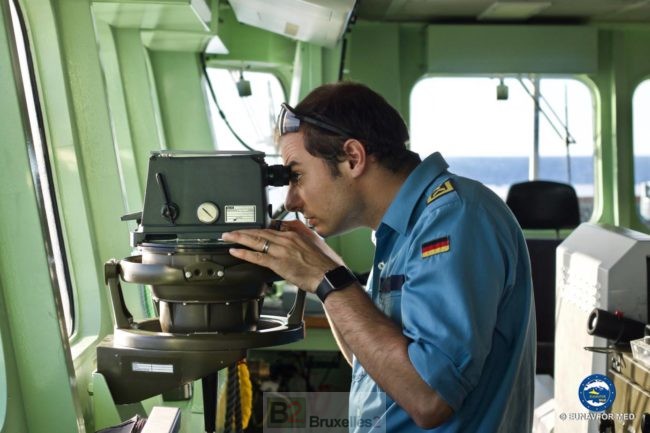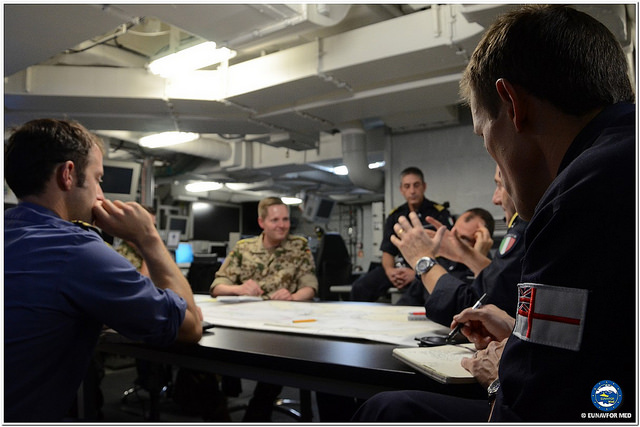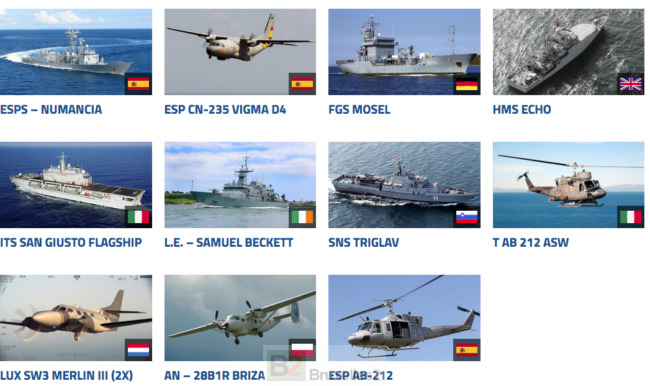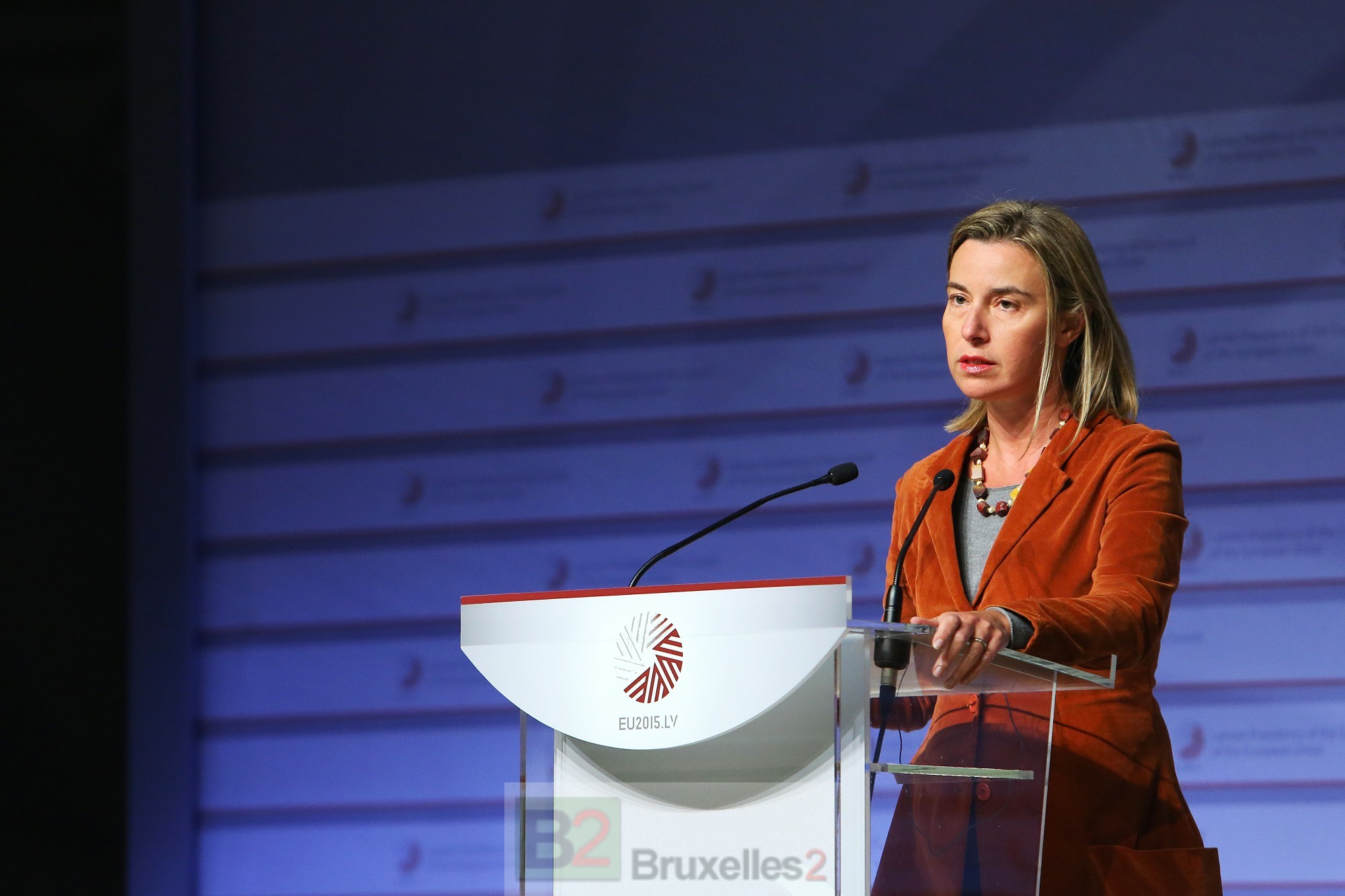An operation passed under the radar screens: Sophia. What is his record? (V2)
(B2) Faced with the trafficking of human beings between Libya and Italy, there are normally about ten boats and planes involved. What are they doing ? What is their track record?
Spurred on by his friends from " Europe's fault (Saturday and Sunday on France Info TV), B2 searched. The answer is not evident.

An operation launched with hope
Remember 2015...
Remember: It was spring 2015. The emotion was at its peak. Several dramatic shipwrecks had taken place in the Mediterranean. The dead numbered in the hundreds. Faced with these tragedies, the European Union reacted and set up a major maritime military operation in the Mediterranean, to help the Italians cope. Admittedly, officially, this operation was not intended to rescue at sea, but essentially to fight against petty criminals and smugglers of all stripes who make human trafficking their business.
Underlying objective: to save lives
In the minds of the general public and of several European countries, however, the main objective of this mission was to save lives. For several months, moreover, this operation was presented in Germany, and in Italy as well, as aiming to save lives at sea. And it was the number of people saved that was often highlighted in the reports drawn up by the operation. " Originally, this operation was created to dismantle trafficking and smuggling networks. But very quickly the operation focused on rescue at sea “, confirms Pawel Herczynski, director of security policy at the EEAS (in the SecPol direction for short).
Disappeared from radar screens
Today, three years later, this operation has disappeared from radar screens. Almost no one talks about it anymore. Even in the corridors of Europe, it is barely mentioned. By insisting a little, we just manage to pull: “ oh yes Sophia »... a little tired. To find the results of the operation, you have to be patient. The Commission's spokesperson's service does not have the figures in mind. Questioned before the European Parliament, an official of the diplomatic service also lost his memory. However, he highlights "the significant number of smugglers who have been arrested and ships destroyed". But questioned by MEPs, he suddenly has a breakdown of figures "I don't have the figures with me". Symptomatic. the operation site remain silent. As for his Facebook, it mostly focuses on glitter. Supporting photos, you can find all the news on the latest officials (ministers, deputies, military officials), who parade at the headquarters in Rome... For more precise information, it's more difficult.
What is the result of the operation?
According to the latest report (which I was able to obtain on June 27), Operation Sophia has Safe » (or helped to do so) more than 44.800 people in distress at sea (compared to 41.500 in November 2017). In three years, it is more than modest (2). Barely the labor of two or three NGO ships.
Regarding the arms embargo, Sophia's ships conducted 1682 reconnaissance (hailings), 98 friendly approaches (sailors boarding contenting themselves with a visit of circumstance), 7 checks of flags and 3 inspections/searches. (Also read: The meager record of Operation Sophia in controlling the arms embargo).
Remarkable discretion
Whose fault is it ?
It's a good question. There are several factors. Unquestionably, the Europeans have been overly optimistic in their objectives and their means. And the wind has changed: the time is no longer really to brag about being present off Libya: it is above all a question of dealing with the problem on land. However, the Libyans did not want to open their territorial waters to ships flying the twelve-star flag. A question of national pride, no doubt, and of affirmation of sovereignty, surely. But also (and above all) the desire to protect a 'small' traffic in which several influential local officials and militias are involved. Result: the European sailors could only play the backyard dancers.
One result: political symbolism
This operation had at least an interest at the level of political symbolism. To show that the Europeans wanted to help Italy, had certain convictions and a sense of action in common. Indeed, finding gathered on the ground not only Italians and Germans, French or British but also Poles and Austrians is a relatively rare thing, when one evokes the question of migrations. It is however weak as a result, and even very weak with regard to the current stakes and, above all, insufficient to compensate for the spectacle of the tear that the Europeans offer today.
(Nicolas Gros-Verheyde)
(1) The last review released by the European Commission speaks of 290.000 lives saved thanks to European action since February 2016. A figure that seems extraordinary and a little inflated. It combines the action of Operation Sophia, and of the various Italian bodies (Coastguard, Guardia di Finanza) financially supported by the Union (through Frontex) and Operation Triton/Themis of Frontex. In fact, it includes all relief except that of NGOs and merchant ships.
Updated June 27 with latest numbers
The operation today includes:
- six ships: Italian San Giusto (which serves as the flagship), the Spanish frigate Numancia, the British ship Hms echo, the German support ship FGS Mosel (A512) and two high seas patrol boats: the Irish THE Samuel Beckett and the Slovenian Triglav (11);
- four aircraft: a Spanish CN 235 Vigma D4, two Luxembourg Merlin IIs and a Polish Antonov 28B1R Briza;
- two helicopters: 1 Italian AB 212 ASW and a Spanish AB 212.



